
In today’s Claire Chats I share some of my top tips for ‘decoding’ and understanding Tudor primary sources. I really do hope that this video helps you with your research and reading.
[Read More...]
In today’s Claire Chats I share some of my top tips for ‘decoding’ and understanding Tudor primary sources. I really do hope that this video helps you with your research and reading.
[Read More...]
Thank you to Tamsin Lewis for sending me details of Passamezzo’s schedule of forthcoming performances.
Old Christmas Returned – a series of Christmas concerts in December and January. Playing in London, Warwick, Cambridge, Guildford, Stoke by Clare (Suffolk), Boxgrove (Surrey), Pangbourne, Snodland (Kent) and on the Isle of Wight.
[Read More...]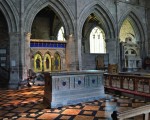
Today marks the anniversary of the death of Edmund Tudor, 1st Earl of Richmond, on 1st November 1456. He died from the plague at Carmarthen Castle.
Thank you to Sarah Bryson for writing this article on Edmund for us.
Henry Tudor, King Henry VII, was the founder of the Tudor Dynasty. His mother was the imposing Margaret Beaufort who risked everything to see her son on the throne and in turn the houses of Lancaster and York united through the marriage of her son to Elizabeth of York, daughter of Edward IV. But who was Henry Tudor’s father? While so much is known about Henry’s mother, his father is a much more elusive figure and sadly he did not live to see his only son and heir claim the English throne.
[Read More...]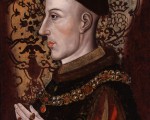
As you may have read in this month’s Tudor Life magazine, 25th October marked the feast day of Saints Crispin and Crispinian, and following the victory of England over France on 25 October 1415 at the Battle of Agincourt, the day became a celebration of that event too. Celebrations included bonfires, revelry and the crowning of a King Crispin.
Today, Heather Darsie shares an article with us on the Battle of Agincourt back in 1415.
[Read More...]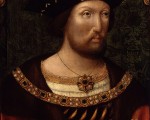
When Henry VIII came to the throne in 1509 he was just shy of his 18th birthday. He was tall, robust, handsome and athletic. Yet when the infamous King died on 28th January 1547 he weighed about 178kg and had a waist measurement of 52 inches and a chest measurement of about 53 inches. So how did this decline in Henry VIII’s physical appearance happen?
As a young man, Henry VIII was considered to be the most handsome prince in Europe. He was tall, standing at six foot two which was taller than the average man of the time. He was broad of shoulder, with strong muscular arms and legs, and had striking red/gold hair. It is said that rather than looking like his father, he resembled his grandfather the late Edward IV. In the armoury of the Tower of London is a suit of armour that Henry wore in 1514. The king’s measurements show that he had a waist of 35 inches and a chest of 42 inches, confirming that Henry was a well-proportioned, well-built young man.
[Read More...]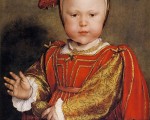
 Today, author Sarah Bryson shares with us an article on Edward VI's christening.
Today, author Sarah Bryson shares with us an article on Edward VI's christening.
In early 1537, Queen Jane Seymour, Henry VIII's third wife, became pregnant. Henry ordered refurbished suites at Hampton Court Palace for his Queen and also a set of new suites for the longed-for son that he believed Jane would bring him. Astoundingly, Henry only gave his builders five months to add these huge rooms and additions to Hampton Court! Hundreds of men were hired for these magnificent additions and as well as being paid overtime Henry VIII also ordered candles so the men could work at night.
[Read More...]

At two o’clock in the morning on Friday 12th October 1537, St Edward’s Day, Jane Seymour finally gave birth to the future King Edward VI after a long and tiring thirty-hour labour. Henry VIII had a legitimate son and heir at long last!
Chronicler Charles Wriothesley recorded the good news and the subsequent celebrations:
[Read More...]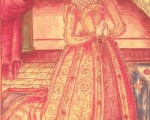
On 10th October 1562, twenty-nine year-old Queen Elizabeth I was taken ill at Hampton Court Palace, with what was thought to be a bad cold. However, the cold developed into a violent fever, and it became clear that the young queen actually had smallpox. Just seven days later, it was feared that the Queen would die.
[Read More...]
As today is the anniversary of the execution of reformer, scholar and Bible translator, William Tyndale, Sarah Bryson has written an article on this fascinating man.
William Tyndale was born in Gloucestershire in 1494 to parents who worked in the cloth trade. Tyndale was born into a Catholic dominated England under the rule of Henry VII. He was brought up a strict and devout Catholic being taught the importance of mass and good works which would help him gain access to heaven. He would have participated in regular confession and penance and his daily life would have been dominated by Saints’ days and following the Catholic faith. The Bible that Tyndale would have known growing up would have been written in Latin, the holy language. Meanwhile the common people would have spoken English, a rough language which was not considered suitable for the holiness of the Church.
[Read More...]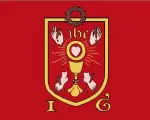
On Wednesday 4th October 1536, there was trouble in Horncastle, Lincolnshire. This was part of what we know as the Lincolnshire Rising which, in turn, was part of the Pilgrimage of Grace rebellion.
Dr Raynes, the chancellor of the Bishop of Lincoln, who was staying nearby at Bolingbroke, after having held a session of the commissionary’s court there, was dragged from his sickbed and taken to Horncastle. Francis Aidan Gasquet, the 19th century Benedictine monk and historical scholar, describes what happened next in his book “Henry VIII and the English Monasteries”:
[Read More...]
In today’s Claire Chats video I discuss bringing up children in the Medieval and Tudor periods – the advice given to parents and the parental/educational treatises of the day.
[Read More...]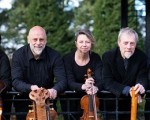
Those of you who live in the UK, or who are visiting the UK this autumn, may be interested in seeing Renaissance music group Piva perform their popular “Measure for Measure” programme. The five members of Piva have a huge knowledge of renaissance music and instruments, and are all multi-instrumentalists – playing up to 40 different instruments at a gig! They really are worth seeing if you can get to any of their performances.
[Read More...]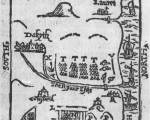
The Battle of Pinkie Cleugh, also known as the Battle of Pinkie, took place near Musselburgh, in Scotland, on the banks of the River Esk, on 10th September 1547. It was a battle of the “War of the Rough Wooing”, so called because it started when Henry VIII tried to force Scotland to agree to a marriage between his son Edward and the infant Mary, Queen of Scots.
[Read More...]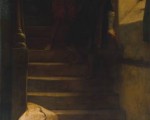
On 8th September 1560, Amy Dudley (née Robsart), wife of Robert Dudley, Earl of Leicester, died at her rented home, Cumnor Place in Oxfordshire.
[Read More...]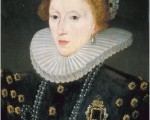
Today is the 482nd anniversary of Elizabeth I’s birth on 7th September 1533, so Happy Birthday Elizabeth!
Elizabeth was the daughter of Henry VIII and his second wife, Anne Boleyn, and she was born at the Palace of Placentia, or Greenwich Palace.
[Read More...]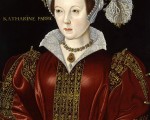
Catherine was born in 1512, most likely in London or Buckinghamshire. Her parents were Sir Thomas Parr, a favourite of King Henry VIII during his early reign, and Maud Parr, who served as a lady-in-waiting to Henry VIII’s first wife Katherine of Aragon. It is believed that Catherine was named after the Queen. Catherine had a younger brother named William, born in 1513 and a younger sister named Anne born in 1515.
[Read More...]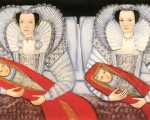
Childbirth is openly discussed in today’s society. Images of pregnant women appear in magazines and women giving birth can be seen on television and in movies. Yet during the medieval period, childbirth was deemed a private affair. Giving birth in the middle ages was a dangerous time for women and childbirth did not discriminate. Young mothers, older mothers, poor or rich mothers, all could die not only in childbirth but also due to complications afterwards. Sadly, more than one in three women died during their child-bearing years.
[Read More...]
Historian Gareth Russell is the editor of our monthly Tudor Life magazine and he’s been working hard on scheduling expert articles and also expert talks for the next few months. We are thrilled to bits that so many historians and authors want to be involved in the Tudor Society by offering their knowledge and expertise to our members – a big thank you to them and to all our members too for your continued support.
Contributors to Tudor Life magazine in the coming months include:
[Read More...]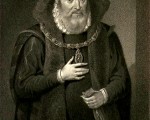
On 23rd August 1548, Francis Talbot, 5th Earl of Shrewsbury, arrived at the Siege of Haddington, in East Lothian, Scotland, with a large army.
The siege was actually part of a series of sieges at Haddington, which were all part of the Anglo-Scottish war known as the War of the Rough Wooing, so named because it was had been started in 1543 by Henry VIII in a bid to secure a marriage agreement between England and Scotland, between Prince Edward and Mary, Queen of Scots.
[Read More...]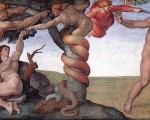
While in today’s modern times many people are more open with their knowledge and acceptance of sexual intercourse, during the Tudor period things were very different.
The church played a major role in sex and the duties of the female body. The Virgin Mary and Eve, the mother of mankind, helped to develop people’s views of sexual intercourse, birth and the formation and function of the female body. Messages were conveyed not only through sermons but also through images and paintings. The act of intercourse, was tainted by the fall of Eve. Women were seen as inferior versions of men and were thought to be greatly susceptible to the devil and the dark forces. The Church taught that women’s bodies ran hot and thus they always desired sex and acts of fornication. Thus marriage and sex within marriage was the only way to control a woman’s desires. Sex was strictly confined to marriage and only for the purpose of reproduction.
[Read More...]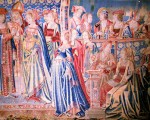
Marriage during the Tudor period was very different to how it is today. First and foremost marriage was considered to be between a man and a woman, and there was no room for anything else. There was also no need for a marriage certificate or legal process as there is today. Instead the Church’s law dictated that all that made a legal marriage was the consent of two people.
[Read More...]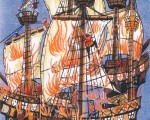
On the 10th August 1512, the Battle of Saint-Mathieu, a battle in the War of the League of Cambrai, took place between the English and Franco-Breton fleets off the coast of Brest. England at this time were allied with Spain and the Holy Roman Empire against France.
[Read More...]
Louis XI chose Amboise as the royal residence of his consort, Charlotte of Savoy, and their son,the dauphin (future Charles VIII), was born at the château in 1470. It soon became a favourite royal residence and was one of the homes of The French court from Louis XI to Francis I.
[Read More...]
The Battle of Woodbury Common, part of the Prayer Book Rebellion, took place on 4th August 1549 on Woodbury Common, near the village of Woodbury in East Devon. The battle took place at 4am and happened when the rebels, who had been defending Clyst St Mary, marched to Woodbury Mill where Lord Russell and his troops had camped for the night. The rebels were defeated.
[Read More...]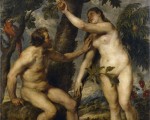
It has been happening to women since the dawn of time and yet during the Tudor age it was rarely spoken about. The monthly curse, flowering, coming of age, a period, a woman’s menstruation goes by many names yet how did women during the Tudor age handle their cycles without the modern day use of sanitary napkins or in some cases pain killers? (And lots of chocolate!)
[Read More...]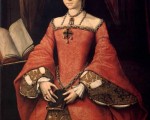
On 31st July 1548, the fourteen year-old Elizabeth, future Elizabeth I, wrote to her stepmother Catherine Parr, the Dowager Queen. The letter was written just before the pregnant Catherine took to her chamber, and just weeks before Catherine died of puerperal (childbed) fever. Elizabeth wrote:
[Read More...]